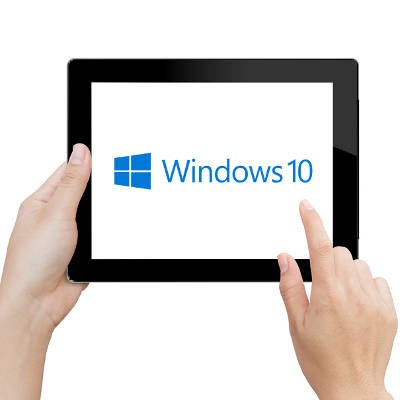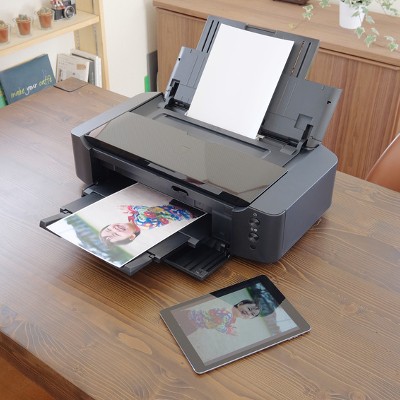While you are probably spending a fair amount of time thinking about your business’ security, can you confidently say the same about those that you’ve employed? Unfortunately, your workers may not put much thought into network security. This could very possibly lead to some severe issues potentially harming your business operations.
Telesys Voice and Data Blog
Did you know that over 2,000 Domino’s Pizza franchises in Australia, New Zealand, France, Belgium, The Netherlands, Japan, and Germany feature delivery by robot? Starship Technologies, a self-driving robotics company, announced on March 29th that they would be partnering with Domino’s to revolutionize the way the delivery process works.
It’s difficult to know what you can and can’t trust in the realm of cybersecurity. However, you’re likely to trust your own security solution. Yet, even this could be a devastating oversight, as some malware masquerades as your security software.
It’s no secret that finding a particular program or file on your computer can be a pain, especially when you don’t have the time to hunt it down by clicking through folders. However, there is a much easier way to locate your desired data. All you need to do is use the search option found in the Start menu, which is the subject of this week’s tip.
In October of 2016, the Federal Communications Commission designed a set of rules known as the Broadband Consumer Privacy Proposal. These rules had intended to flip the status quo and require Internet service providers (ISPs) to gain their customers’ permission before they harvested their browsing histories to sell to advertisers. This proposal is now moot with the establishment of a new law that passed through Congress and was signed by President Trump in April 2017.
Cloud computing has taken the business world by storm, fulfilling so many needs and simplifying as many processes. If you’ve been on the fence about incorporating the cloud into your IT infrastructure, you should know a few of these benefits to help you make your choice.
The average employee and business owner relies on various hardware solutions to go about their day-to-day duties. These hardware devices--think keyboards, wireless mouses, external microphones, and any USB devices--utilize drivers which allow for inter-device compatibility. What happens when these drivers aren’t installed or kept up to date? Your technology suffers, and so does your productivity.
An unfortunate fact about the modern business world is that any organization that utilizes technology is playing with fire. Cyber attacks can circumvent even the most well-protected networks through the company’s users. This is, unfortunately, something that business owners often don’t learn until they’re on the receiving end of an attack; just like the two companies that fell victim to phishing attempts that were supposedly operated by Evaldas Rimasauskas, a Lithuanian hacker who has been accused of stealing $100 million from them.
Every time you pick up a personal computer from a vendor, chances are that it will have an extremely basic firewall pre-installed. These consumer-grade firewalls leave much to be desired, especially in the business environment. You’ll want to make sure that your organization is equipped with enterprise-level solutions designed to protect on both a fundamental level and an advanced level. To do this, you want to take advantage of a Unified Threat Management solution.
Managing your company’s email can be a complex endeavor, due to the sheer volume of messages being sent and received, as well as the need to have a way to prioritize which messages are important. It’s safe to say that all organizations can benefit from email management solutions, such as email archiving and spam protection, and multi-factor authentication.
You might take extreme measures to keep your business’s devices from contracting the odd virus or malware, but what if all of your efforts are for nothing? You could have the greatest preventative solutions out there, but you can still get infected by some nasty threats, the reason being that the device was infected before you even started using it. You might be surprised by how often this happens, even to wary business owners.
The average office worker needs to access the Internet in order to do their job. What they don’t need to access is cat videos, memes, social media, online games, and malware-ridden websites. How can a business owner clamp down on Internet activity in their office? By equipping their network with a content filtering solution, of course.
Throughout human history, cartography served as an exciting and specialized field for knowledgeable scribes. Today, the entire planet has been mapped and apps like Google Maps allow any Joe Schmo with a smartphone to have the world at their fingertips. Consequently, you can effectively be a cartographer of sorts, just by knowing how to best use Google Maps.
As far as leaps in computing go, this one’s pretty tiny: a research team from IBM has managed to store data on a single atom. Despite the microscopic size of the result, the impact is potentially huge when one considers the effects this discovery could have on computing.
No business owner likes to think about it, but every business needs to be prepared for the possibility of their data disappearing. Have you taken steps to ensure that, should some disaster strike, you will be prepared to dust yourself off and continue operations? Furthermore, are you sure that your preparations will be sufficient and your data will be preserved?
Providing outstanding customer service is a requirement to be successful in today’s business environment. If you ignore this valuable tenant of business, then you’ve got a competitor who will gladly jump on the opportunity to steal away your customers and prospects by offering better service. What steps is your business taking to make sure that your customer service is second to none?
In today’s mobile-centric world, portability is becoming more and more crucial to success in business affairs. This phenomenon can easily explain why tablets are commonplace in boardrooms and briefcases. With Apple and Samsung offering two heavy-hitting tablets (the Galaxy Tab S3 and the iPad Pro), we’ve decided to analyze their features head-to-head to find out which is the supreme option for your business needs.
Did you know that 43 percent of IT decision makers have plans to increase their cloud investments throughout 2017? This is according to a recent survey which, when combined with the steady rate of cloud adoption seen during the past decade, proves that the cloud is the next phase in the evolutionary development of business computing. While this shows great promise for the future, cloud adoption is not something to dive into blindly.
Do you remember the day that you purchased your current workstation? Maybe it was last week, last month, last year, or several years ago. At one point, it was pristine, untouched by the demands of the workday, but those days have long since passed. Over time, your computer collects all sorts of stuff on it, from unnecessary files to outdated, unused software.
Today’s businesses are looking to expand their cashless payment options to include those made through mobile devices. Doing so, can provide your organization with a variety of benefits.
Mobile? Grab this Article!
Tag Cloud




















